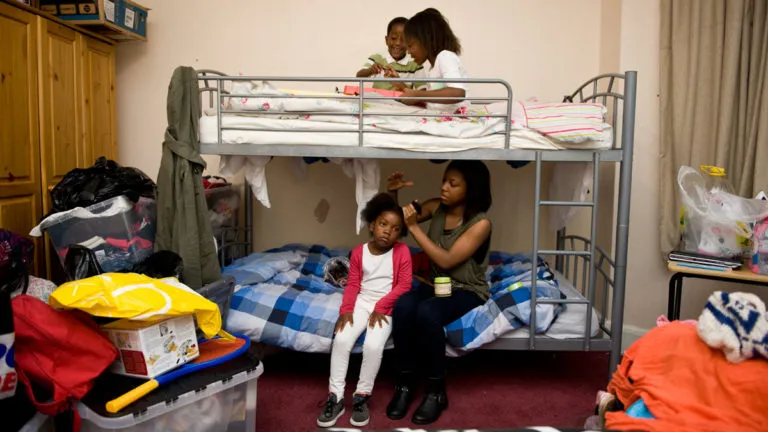The full extent of the homelessness crisis
Published: by Hannah Rich

New homelessness figures
The Ministry of Housing, Communities and Local Government (MHCLG) recently released new figures on homelessness, marking the last release of the current version of the homelessness statistics. With the introduction of the Homelessness Reduction Act in April 2018, the information local authorities collect about households, and the way this information is presented, will change.
The current statistics are the most important source of information about households and families found to be homeless. They tell us what kinds of households are homeless, how they became homeless, and how many households are living in temporary accommodation.
What is the scale of the issue?
In 2017/18, 56,580 households were accepted as homeless. The number of households accepted as homeless has decreased by 4% over the last year. This is welcome news, and may reflect how some councils have ramped up their homeless prevention work in advance of the introduction of the Homelessness Reduction Act. However, the still high numbers show how councils have their work cut out, if we are to start to tackle the current homelessness crisis.
More households are living in temporary accommodation
The number of all households living in temporary accommodation has increased by 44% over the last five years – the highest it’s been since 2006. Worryingly, despite the slight fall in homelessness acceptances, the number of households living in temporary accommodation has continued to rise. This could be a short-term trend, or it could also be yet another worrying consequence of the lack of genuinely affordable homes for people to move into.
Single parent families are disproportionately affected by homelessness
There are currently 38,390 single parent families living in temporary accommodation, an increase of 54% over the last five years. Moreover, single parent families comprise 63% of all families in temporary accommodation, despite making up only 23% of families in England. This means that single-parent families are particularly bearing the brunt of the housing crisis.
High rents and unforgiving welfare cuts are a lot for anyone to deal with, but single parents have the added stress of meeting these on a single income – and juggling this with childcare costs.
The number of older people becoming homeless continues to increase
Younger people are still disproportionately affected by homelessness. But the stats show that the number of people aged 60 and over affected by homelessness is the highest it’s been in a decade. In 2017/18, 2,500 people aged 60 and over were accepted as homeless, an increase of almost 40% over the last five years.
This may be linked to a rise in private renting by older people. A record 1.13 million over-50s are now renting privately. A recent report found that amongst all over-50s paying rent or a mortgage, private renters are the most likely to have borrowed or cut back on spending to cover their housing costs in the last 12 months.
What’s the solution?
In April 2018, we saw the introduction of the Homelessness Reduction Act. The aim of the Act is to improve the way that councils manage homelessness, and should mean that more households get the support they need. In the next set of homelessness statistics, we will start to see the impact that the act is having.
But in order to really tackle homelessness, we must also address the fundamental cause of homelessness: the lack of genuinely affordable homes. To do this, England needs to have a bigger and better social housing sector. That’s why we have launched the Big Conversation, to encourage debate around the role and future of social housing. Have a look here to find out more.
